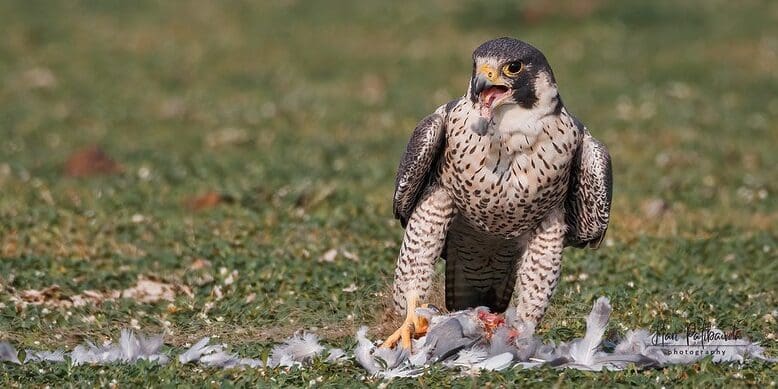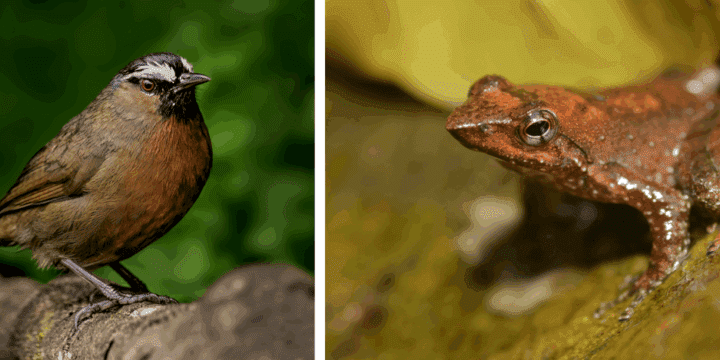Bat conservation: an evidence-based approach
Dr Winifred Frick is Chief Scientist at Bat Conservation International

I first learned about Conservation Evidence during a plenary talk by Dr. Paul Racey, Regius Professor Emeritus of Natural History from the University of Aberdeen, at the International Berlin Bat Meeting in 2017 on the theme ‘Are bats special as conservation targets?’ At the time, I had recently made the career shift from an academic researcher to working at Bat Conservation International, a non-profit conservation organization. My new job at BCI was to develop and lead science-based approaches to bat conservation. I found the challenge of directing and using research that leads to actual conservation outcomes intellectually rewarding while also humbling. I certainly was guilty of the common practice among academic conservation biologists – focusing my research on ecological questions, while suggesting in concluding paragraphs of scientific papers how the work might be relevant to conservation. The sin of course being that the conservation relevancy was usually post hoc commentary rather than the a priori question driving the work. Dr. Racey’s description of Conservation Evidence immediately grabbed my attention as a powerful tool to help define and execute better bat conservation.
And better bat conservation is needed around the world. Scientists have described over 1400 bat species and we add new species each year (www.batnames.org). Bats occur on every continent on Earth, except Antarctica, and globally account for roughly 20% of all mammalian diversity. However, we know less about the conservation status of bats compared to other mammals or birds – with a significantly higher proportion of bat species listed as Data Deficient and a much smaller proportion of species with known population trend status, according to the Red List of Threatened Species by the International Union for the Conservation of Nature (IUCN) (Frick et al. 2019). Currently, the IUCN Red List shows 213 bat species in a threatened category (Critically Endangered, Endangered, or Vulnerable) and another 242 species as Data Deficient.
At Bat Conservation International, we developed a prioritization rubric to guide our decision-making about what conservation projects to implement. Species vulnerability is the first part of the rubric and we use the IUCN Red List to determine species most in need for immediate conservation action to prevent extinction. However, with 21 Critically Endangered and 83 Endangered bat species, vulnerability alone is not sufficient for prioritizing action. Therefore, we have two other parts to our rubric: feasibility and impact. In this part of the rubric, we assess our organization’s ability to take action and assess the expected impact of actions to achieve our mission of preventing bat extinctions. When assessing feasibility and impact, Conservation Evidence is a key resource in our conservation planning.
The actions and evidence for bat conservation continue to grow each year at a robust pace. The recently published 2021 edition of the Synopsis of Bat Conservation lists a total of 200 actions compared to only 78 actions identified in the first edition of the Synopsis of Bat Conservation (a 156% increase). However, we have much work remaining to compile evidence for all these actions and build a robust portfolio of evidence-based solutions for protecting global bat diversity. Sixty percent (119/200) of the actions listed in the 2021 edition do not have any studies contributing evidence. At BCI, we’re often in a position where we must ‘learn by doing’ and we’re striving to ensure that any actions we implement without evidence can be designed and executed to contribute evidence.
In addition to our own conservation work, BCI also provides student scholarships to graduate students working on bats. As part of our commitment as Evidence Champions, we offered a new recognition as part of our student scholarship program this year. Student applicants could apply for a Conservation Evidence badge by identifying how they were using conservation evidence in their study plan or had designed research projects to contribute conservation evidence. We awarded three BCI Student Scholars with a Conservation Evidence badge this year.

One of the things we learned in our student scholarship application process is that we need to continue to better socialize what conservation evidence is and how best to use evidence in planning research activities for graduate students. This challenge reflects on the larger problem of incentivizing graduate students to conduct applied projects where conservation outcomes are considered a priori as part of hypothesis-driven research. Training for graduate students in using and testing conservation evidence can be a win-win for students who want to contribute to meaningful conservation while pursuing their graduate training and degrees. Hopefully with the increase in scientific journals that are interested in publishing applied research and contributing evidence, we may see increased incentive for students to use their graduate research to use and contribute conservation evidence. At BCI, we recognize this is a collaborative process among practitioners and student researchers and we’re committed to providing training and resources to our student communities to encourage use of conservation evidence in graduate research.




Reblogged this on Wildlife Landscape Conservation Consultant and commented:
Bat conservation: an evidence-based approach
thank you for the information